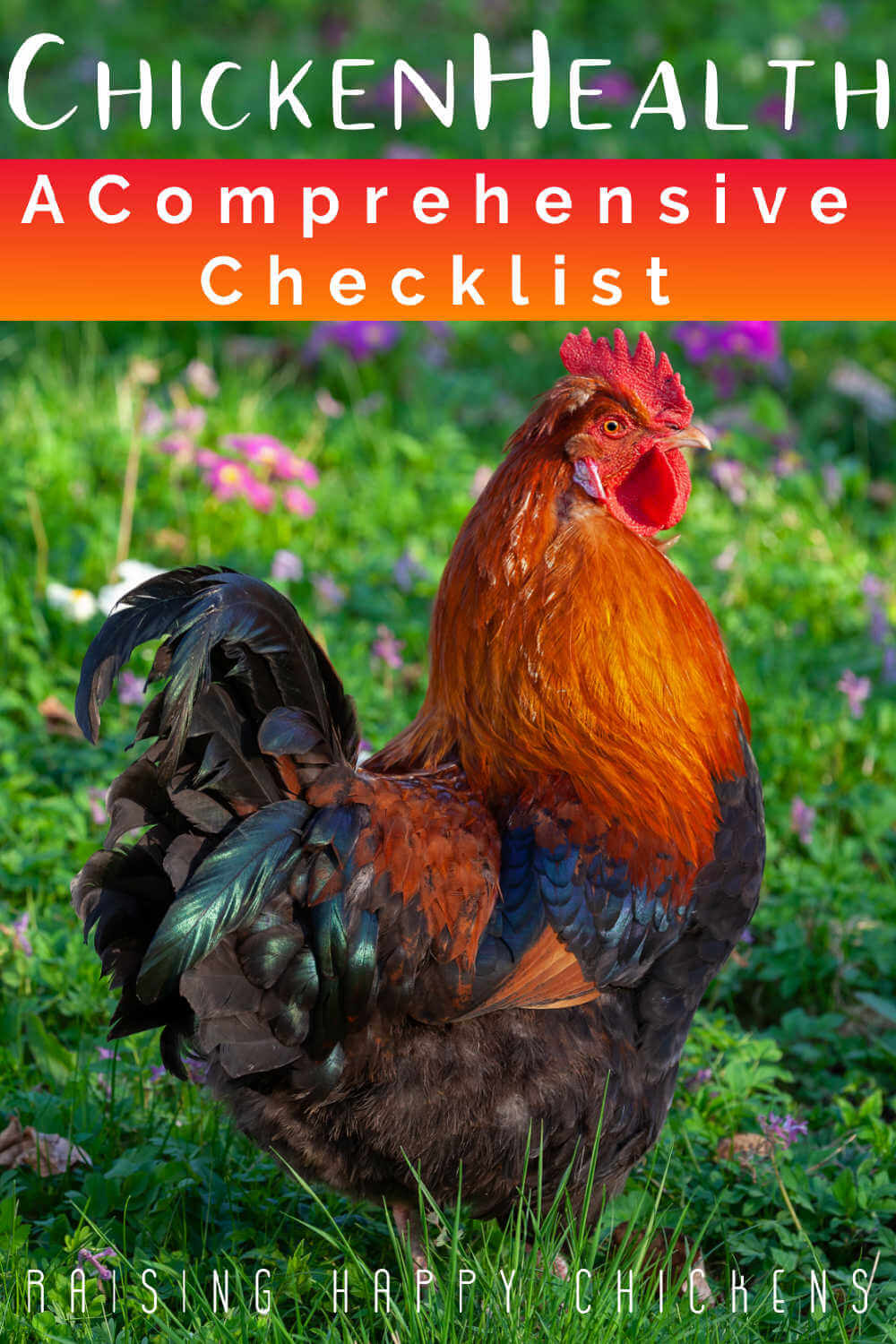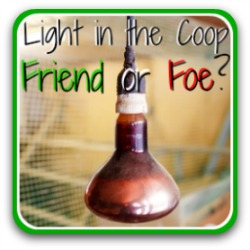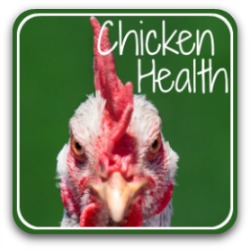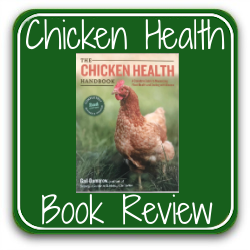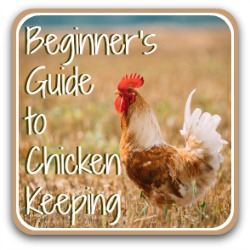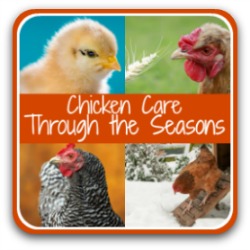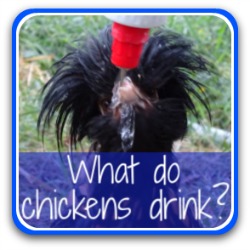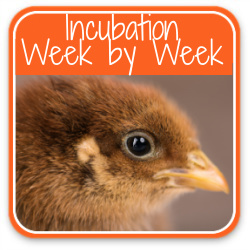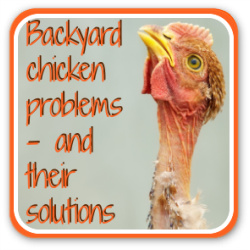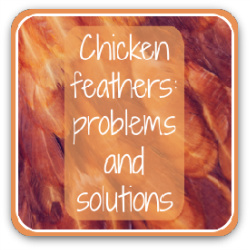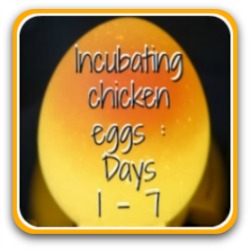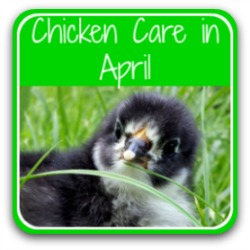Your monthly chicken health check sheet.
Chickens are notoriously good at hiding illness until it's too late.
So, prevention being better than cure, keeping an eye on their general health at very regular intervals is critical if you're going to maintain a healthy flock.
Chicken health can deteriorate very quickly, so whether you have two hens or two dozen, these quick checks should be carried out at least every month.
Are you in my weekly chicken digest group? If so, you'll receive a free downloadable health check sheet twice each year to help you assess quickly and thoroughly.
If you're not, why not sign up now?
For experienced chicken keepers, it’s often possible to realise something is wrong just by casting an eye over the flock.
But, experienced or not, nothing replaces a thorough examination of individual birds.
The issues in this check sheet are enough to give you adequate warning of problems before they become out of hand. It shouldn’t take longer than five minutes per chicken - if they co-operate!
And bear in mind, you don’t need to check everyone on the same day, as long as you can remember who’s been looked at and who hasn’t.
A good time to carry out these checks is when they've just roosted - they tend to be less active then. If you feel your chickens are stressed by the examination, wrapping them in a towel can be calming.
For flocks of fewer than around a dozen chickens, there’s no need to keep a written account. If you have larger numbers you may wish to - it can help to see patterns over time.
So, let’s get going!
This is a long, detailed page. If you want to check one particular issue, use these links.
1. The comb, wattles and chicken health.
The comb is the fleshy crest on top of the head. It can be a different shape depending on the breed, and is generally red.
Wattles are the flaps hanging from just behind the beak and again, are generally red. They're larger in males than females and tend to grow with the bird.
Both are used to regulate a chicken's temperature: in summer they allow heat to escape.
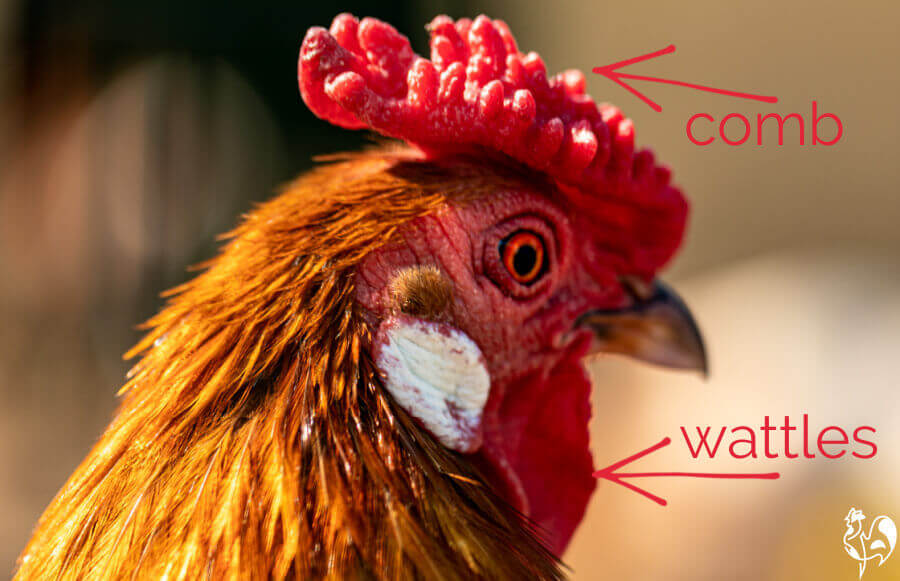
A rooster's comb and wattles are viewed by hens as a sign of a mature male with good levels of testosterone, who'll make healthy chicks. The larger and more showy, the better!
In a hen, both are smaller and the colour is an indication of sexual maturity. As a pullet (a hen before egg-laying age), both comb and wattles will be small and light pink in colour. As she nears the point of lay, they will both grow and deepen in colour.
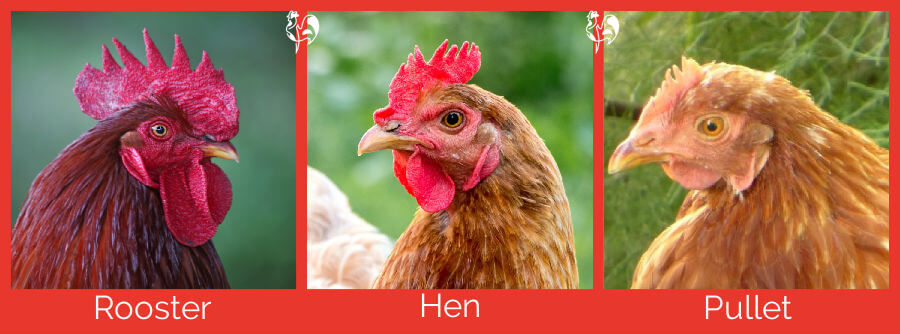 A rooster, a mature hen and a pullet, showing the difference in comb and wattles.
A rooster, a mature hen and a pullet, showing the difference in comb and wattles.Health issues to look for in the comb and wattles.
It's a good idea to get used to the sight and touch of wattles and combs when your chickens are fit and healthy, so you'll know what they should look and feel like.
- Touch: bearing in mind the gender and age of the bird, the comb and wattles should be a good colour, and feel fleshy, full, soft and supple to the touch. Are they dull and feel dry and flat? Your chicken could be dehydrated.
- Colour: is the colour a strong red, or pink for a young hen? If there's any sign of a blue tinge, you could be looking at a circulation or respiratory issue.
- Frostbite: are you seeing any black markings on the comb? Make sure it's not simply bits of soil! Otherwise, this can be a sign of frostbite, particularly prevalent in cold climates with large-combed birds. Read how to spot it and what to do in my detailed article.
- Blood: don't mistake black frostbite marks for injuries caused by pecking or other physical injuries. Blood specks should be dealt with immediately - chickens will peck mercilessly otherwise. See this article about how to isolate injured chickens.
- Grey or white spots or dark scabs: can be a sign of fowl pox. Highly contagious between chickens, but not a problem for humans. There will be other symptoms such as weight loss and decreased egg laying.
- Fowl pox is spread by mosquitoes, so try planting mint and marigolds near the coop, and don't leave standing water in the run. Again, quarantining sick chickens is a must.
2. The eyes as an indicator of chicken health.
A chicken's eyes should be clear, clean and bright, with no discharge.
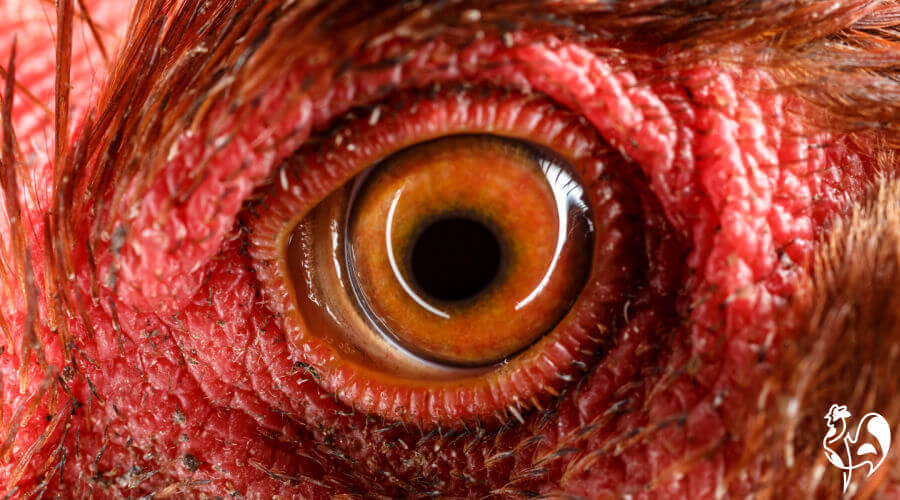
Problems to look for in chicken eyes.
- Discharge: is there any kind of discharge from the eye? Bubbles or fluid at the corners of the eye are an indication of respiratory issues.
- Colour and shape: is the eye an unusual shape, or has it turned a light grey in colour? Both these are a possible indicator or Marek's disease. Isolate the bird immediately, and consult a veterinarian about testing and treatment.
- Cloudiness: like any animal, a chicken's sight will deteriorate over time. If the eye looks cloudy, it may be cataracts, and there's nothing to be done except to make sure she is getting her fair share of food.
3. What do the beak and nostrils tell us about chicken health?
The beak and nostrils should be clean and showing no signs of discharge. Some beaks, particularly from rescued ex-battery hens will have had their beaks trimmed. This is done because commercially, caged hens have very little space and will otherwise peck at each other.
If you have rescued hens their beaks won't be a problem, except that they won't be able to peck well at hard fruits, for example.
Backyard chickens should not have their beaks trimmed. It's painful and unnecessary. If they are well housed and kept healthy, there should not be a pecking problem.
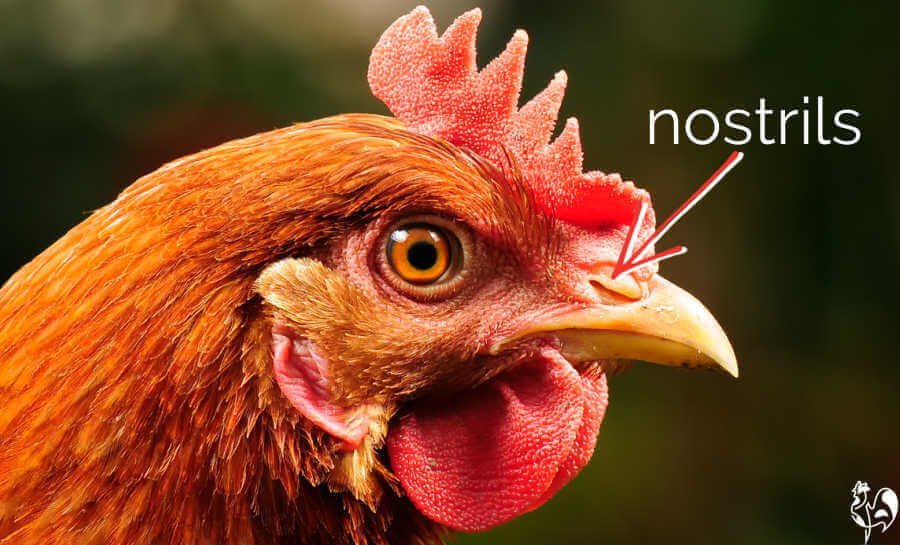
How to inspect beaks and nostrils for health issues.
- The beak should be perfectly aligned. If you find a beak that's crossed, you may have to make special feeding arrangements. This Facebook page, "Crossbeaks and Special Needs", is a wonderful resource.
- Inspect the beak for fractures. It's unusual, but it can happen if, for example, a chicken gets caught in a poorly placed mouse trap.
- Listen to the breathing. It should be soundless. If you hear rattling or wheezing, you're likely to have a respiratory problem.
- Now smell the beak (I know - it sounds weird!). If there's an unpleasant, slightly sour smell, there's likely to be an issue with sour crop - see below for treatment.
4. The crop and its part in chicken health.
How to inspect the crop.
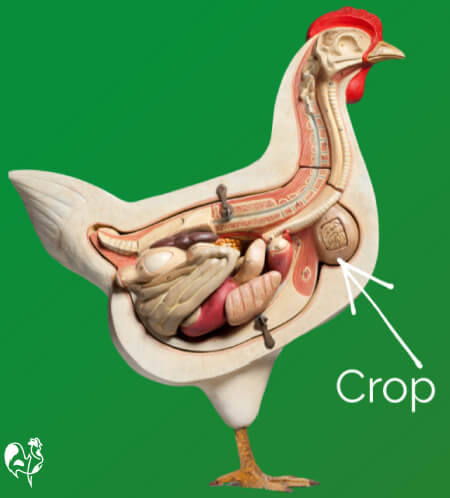
- The crop is located towards the bottom of the chicken's neck. Think of it as a kind of "holding tank" where food is kept before being passed either to the gizzard, where food requiring grit is digested, or the proventriculus, where soft food is digested.
- It's easy to feel: hold your chicken with her tail facing you. Reach to the front, slightly right of the breastbone.
- In the morning, the crop should feel almost flat - it's empty as food has been digested. During the day and before roosting, it should feel more rounded as the chicken eats and the food waits to be digested.
- Squeeze it gently. It should feel swollen and a little firm to the touch.
- If it feels hard, it may mean it's impacted. Food, particularly long grass or hay, can become stuck in the crop.
- If it feels mushy, slightly liquid, it may indicate sour crop.
- Now smell your chicken's breath. I know it sounds weird, but it's important.
- If it smells like sour milk, it can mean she has a sour crop. Both impacted and sour crop will need treatment.
Treatment for crop problems.
If your chicken can't digest food properly, she will become ill very quickly. So whatever the problem, it needs treatment.
An impacted crop should only be treated by a veterinarian - if possible, an avian veterinarian.
- You'll find information online saying it can be treated by syringing vegetable oil into the chicken's mouth and gently massaging the crop. This is likely to be effective only with a very minimal impaction.
- You'll also see advice to flush water or oil down the chicken's throat, and then hold her upside down to empty the crop. This is dangerous. You run the risk of the chicken ingesting and suffocating in the liquid.
Sour crop in chickens is a sign of a yeast infection, usually caused by damp or mouldy food. Again, seek veterinary advice if you can.
- If not, isolate the chicken and withhold food and water for 24 hours so that the crop empties as much as possible.
- The British Hen Welfare Trust advises(1) to dilute 20 mls of apple cider vinegar to one litre of water. Syringe it - gently - into the beak. It's easiest to aim for the side of the beak.
- After 12 hours, offer a small amount of tepid water together with a teaspoon of feed, softened.
- Build slowly up to normal feed over a week or so, making sure to keep an eye (and a nose!) open for sour crop returning.
How to avoid crop problems.
- Keep long grass, weeds, hay and random bits of string well away from your chickens.
- Keep your feed in rodent- and weather-proof containers. This is the automatic feeder I use which ensures neither rodents nor liquid can get to my feed.
- If your chicken has had antibiotics, give them a probiotic treatment after. Antibiotics can destroy the good bacteria in the gut.
5. Feathers and health.
A healthy chicken will have glossy, bright feathers with no breaks or bald patches. Sophia Lor-hen, one of my Wyandottes (below), is a great example of a bird with healthy plumage.
How to inspect feathers.
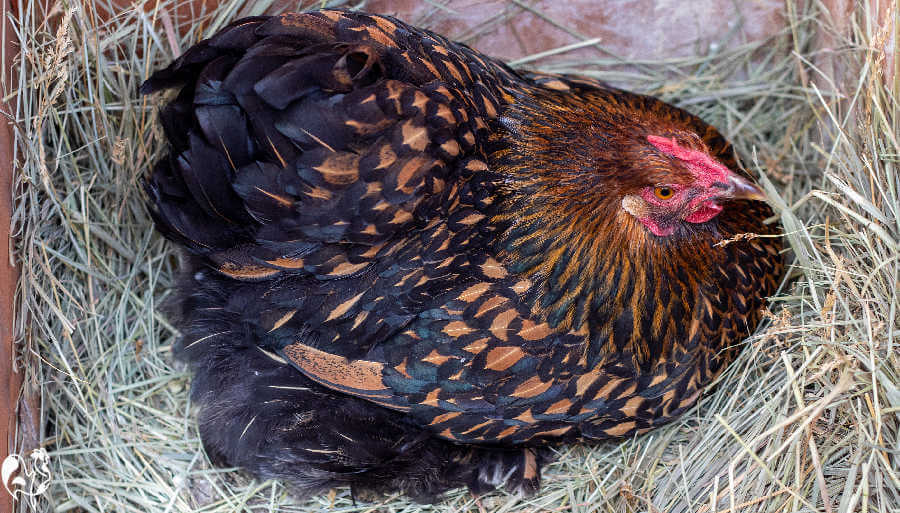 One of my Wyandotte hens with a glossy, healthy set of feathers.
One of my Wyandotte hens with a glossy, healthy set of feathers.- Pick your chicken up and inspect under the wings and around the vent (back passage). These areas should be clean, and free from mites or lice.
- Chickens are normally good at keeping themselves clean, so any dirt should be taken as a warning that something is not right.
- Check the skin under the feathers. Any sores or broken skin should be dealt with immediately, otherwise your chicken runs the risk of being mercilessly pecked by her coop-mates.
- Do your chicken's feathers look like this?
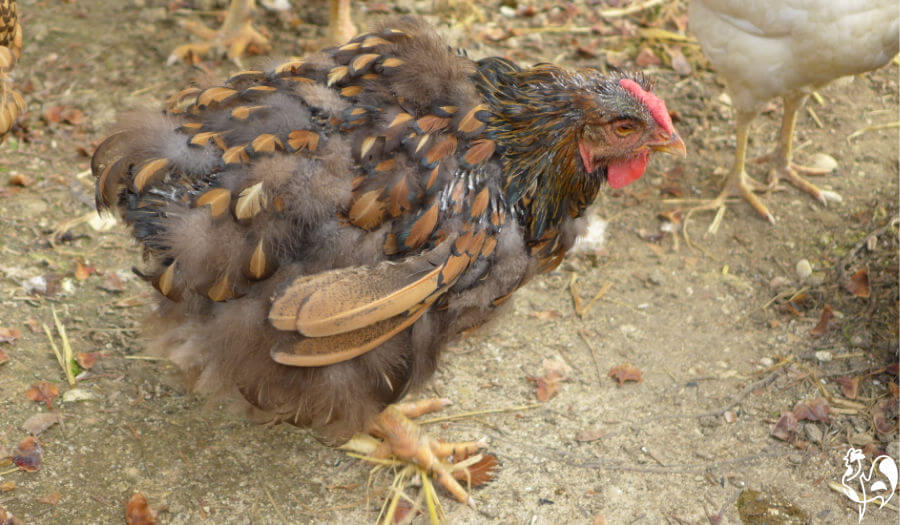
- Believe it or not, this is the very same hen as in the photo above. She was moulting, a perfectly natural process which generally happens just before winter.
- Check this article for more information about why chickens lose feathers and what you should do about it.
Treating feather problems.
- If you find mites or other parasites, treat the whole flock. This article has more detail.
- Breaks in skin, or sores, should be treated by removing the chicken into isolation immediately. Chickens are attracted by the colour red and will peck an open wound, potentially causing not only pain but infection.
- This article explains how to go about this, and how to treat the wounds.
How to avoid feather problems.
- Make sure you feed your flock a good quality feed. Even on a budget, it's possible to provide quality.
- Always provide a dust bath. Chickens use this to keep their feathers in prime condition and rid themselves of parasites.
- At difficult times - extreme cold, during moulting, after a predator attack for example - consider adding some high protein foods into their diet, in moderation.
6. Wings.
If you hatch your own chicks, you'll know that chickens' wings come in very early - as early as two weeks post-hatch. Which raises the problems of even baby chicks starting to fly...
How to check for problems with wings.
- If your flock is holding their wings out to the side, particularly if it's combined with panting, they're too hot.
- Take action straight away to prevent heat stroke.
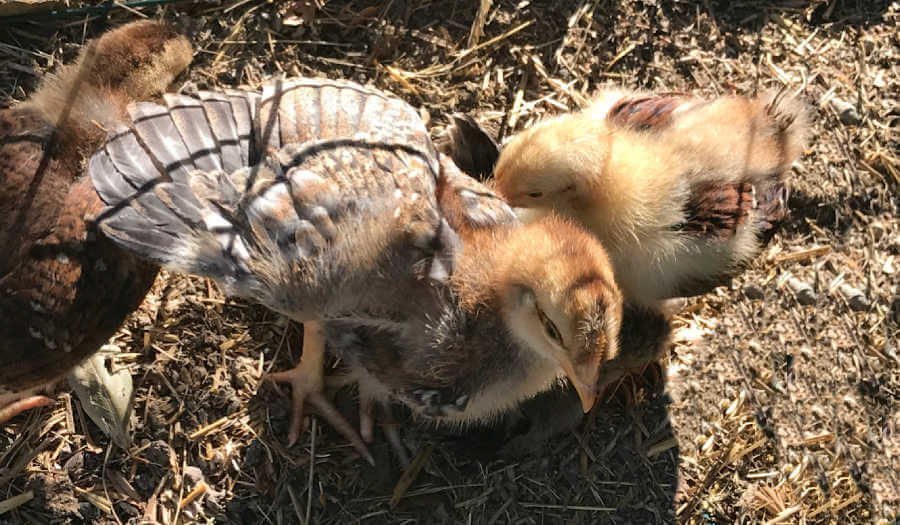 One of my baby chicks - he's too hot. Take action straight away.
One of my baby chicks - he's too hot. Take action straight away.- Wing feathers should be intact and unbroken. If there are signs of broken feathers, make sure your chickens are not bullying.
- If your chickens are flying into danger, you may need to clip their wings. It's completely painless if it's done properly. See this article about how to clip a chicken's wings, which includes an easy to follow video where I demonstrate on one of my escape artist Red Stars.
- Check thoroughly under both your chicken's wings for signs of mites or lice. Take action as indicated above.
7. The vent and chicken health.
The vent, also called the ‘cloaca’, is the opening underneath a chicken’s tail from which a hen excretes both poop and eggs.
In its healthy state, it’s clean, pink and moist with no poop stuck to it and no sign of mites at the base of the feathers.
How to inspect the vent.
Take a look at the vent by picking your chicken up and, if s/he’s a bit unsettled, cover her loosely in a towel which should calm her.
This inspection should be carried out on all newly-hatched chicks as well as adults. That’s because chicks can develop a problem of the vent called pasty butt.
Baby chicken health issues: pasty butt.
Pasty butt is a condition where the chick‘s vent becomes clogged with poop, which hardens around her back passage.
The means the chick can no longer pass more poop, which means that poisons build up in the system.
This condition needs to be dealt with immediately - it can kill chicks very quickly. For that reason, I have a separate article about identifying and dealing with pasty butt, here.
Other vent problems.
Links in this section are "affiliate links", which means that if you click and buy something, I earn a small commission at no extra cost to you.
- Vent Gleet: watch for a red, swollen vent, soiled feathers around the vent area, and a nasty-smelling discharge. As soon as you see it, separate the bird from the rest of the flock.
- To prevent it, make sure your chicken feed is free from mould and water is free from algae. Don’t feed too many treats, even if they’re healthy ones, and make sure they have adequate grit and oyster shell.
- To treat it, add probiotics to your chicken’s water, stop feeding anything apart from their feed and, if it doesn’t start to clear within a couple of days, see your veterinarian. Your chickens may need antibiotics.
- Fly strike: a particularly unpleasant condition which needs immediate treatment. This article describes how to recognise and treat it.
- Prolapsed vent: this is most frequently an issue in laying hens. You’ll see part of the oviduct sticking out from the chicken’s vent. It can be raw and bloody - not a pretty sight. But it can be managed fairly easily if caught early enough.
- To prevent it: don’t force your hens to lay more eggs than comes naturally. This article about light in the coop has evidence about what works and what doesn’t in this respect.
- To treat it: isolate the hen - the rest of the flock will peck at the vent otherwise. Cut off any dirty feathers, and stand her in a warm tub in which you’ve dissolved some Epsom salts (which you should keep in your chicken first aid kit). Gently clean off any poop.
- Take the hen out of the water and gently dry the area. Spray with Vetericyn (again, you should have this in stock) to make sure it’s clean. Then, apply gentle pressure to push the prolapse back inside the vent.
- Keep spraying two or three times a day while the hen remains in isolation. Add electrolytes to her water to sustain her - you’ll find how to make them from items in your store cupboard in this article.
- Once the vent has remained intact for longer than two days, the chicken can return to her flock mates - but keep an eye on her for the rest of her life, since she’ll be susceptible to a recurrence.
8. Chickens, health, legs and feet.
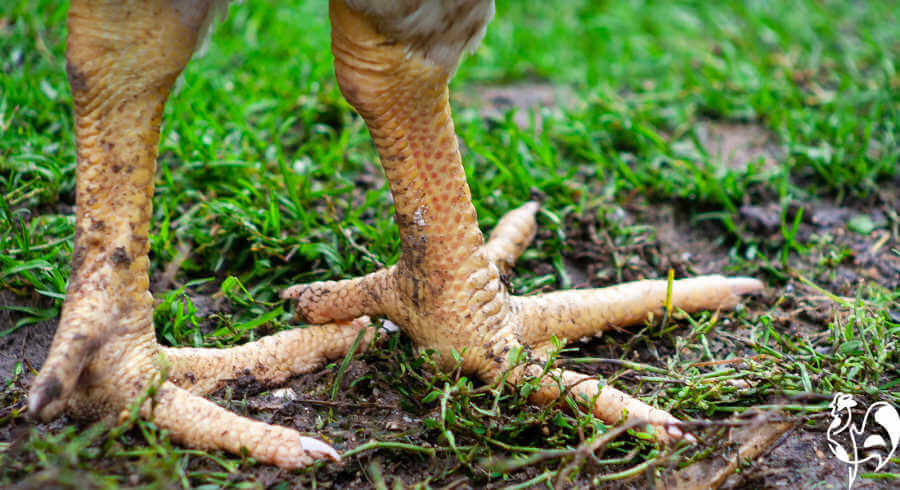
Chickens' legs should be smooth and evenly coloured. If your chicken is older, the scales may be a little more coarse, but not raised.
Feet should be free from impacted dirt, cuts and any sign of oozing. Most chickens have four toes; Silkies, the Dorking, Faverolle and Sultan breeds have five.
Roosts should be the correct shape and width to protect feet from the cold during winter months. See this article for more details.
Examining the legs.
- If your chicken has feathered legs, like the Brahma or Sablepoot, check carefully for mites and other crawly parasites, and make sure the feathers are clean, especially in muddy runs.
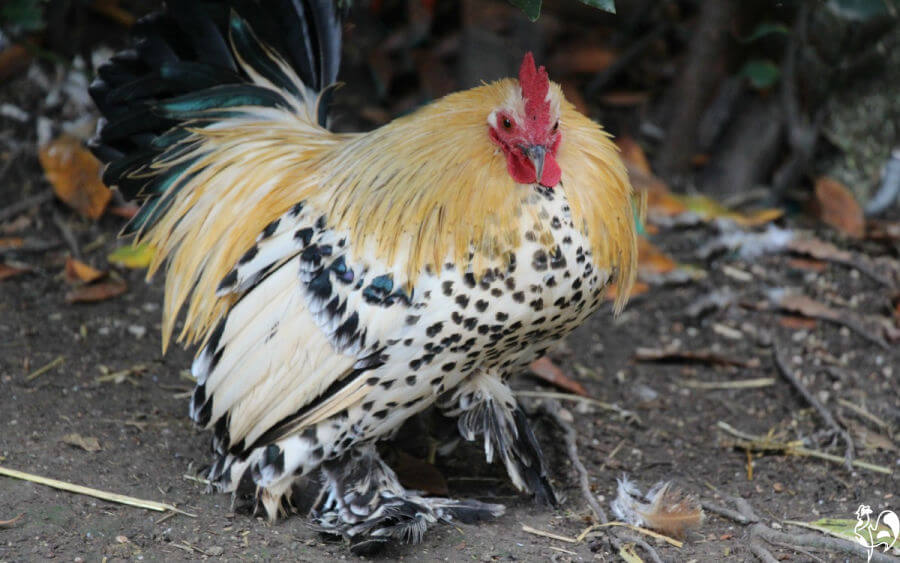 My Sablepoot rooster, Bono, showing off his feathered legs.
My Sablepoot rooster, Bono, showing off his feathered legs.- Check the scales on each leg. If they're raised, you may have a problem with scaly leg mite.
- If you have rings on your flock's legs, check that they're not too tight. If circulation to the feet is blocked, you'll interfere with the chicken's ability to control temperature(4).
How to check the feet.
- Examine the bottom of the foot. Is it clear of impacted dirt?
- Do you see any darker areas? If so, your chicken may have bumblefoot. Unless you want to cut it out yourself, see a veterinarian. It may require antibiotics.
- If your flock lives outside or free ranges, nails should keep themselves at the right length. If you see nails that look long or are turned under, it's time to clip them.
9. Weight as an indicator of health.
- Knowing how your chicken feels when she's healthy is particularly important here.
- A chicken can lose weight very quickly. The best way to check is simply to hold her (or him). Don't rely on sight only - feathers can hide a multitude of sins!
- Check around the keel bone - the bone that runs down the centre of her chest. Is that bone sticking out? That's an indicator that your bird is thin. Consider issues such as bullying as well as physical illness - is she being stopped from getting to food?
- There should be some flesh to both sides of the keel bone - but not too much. Obesity is as much of a problem with chickens as it is in humans, and is one of the possible causes of Sudden Chicken Death Syndrome.
How to keep your chickens a healthy weight.
- One simple issue: make sure they have a high quality and, if possible, organic feed. This article discusses what chickens require at different ages.
- We all want to offer our chickens treats. But too many can lead to obesity, serious illness and even death, just like too many treats for humans.
- So feed healthy treats, and feed them in moderation.
10. What's the scoop on chicken poop?
It's not a particularly pleasant sight, but droppings can be important indicator of chicken health.
The commonest form of a healthy poop looks like this: firm, some shade of brown, with a white cap.
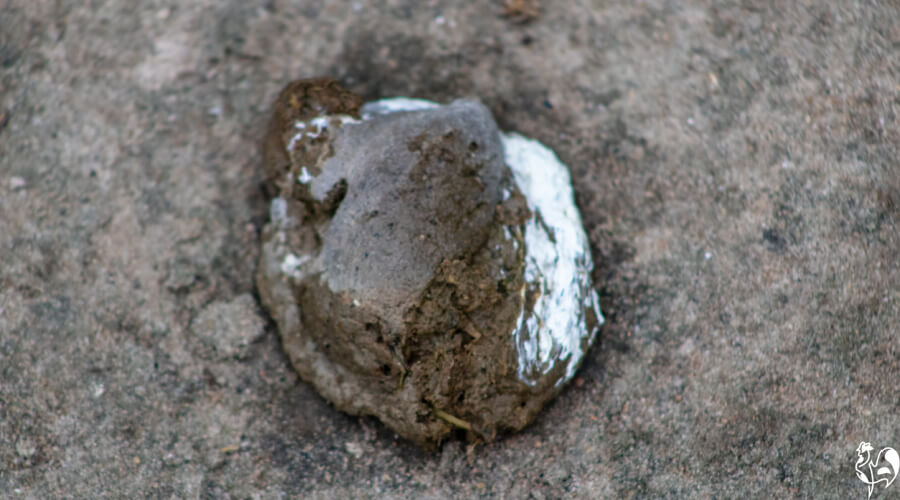
But you'll also see what looks like a runny version, which is also normal...
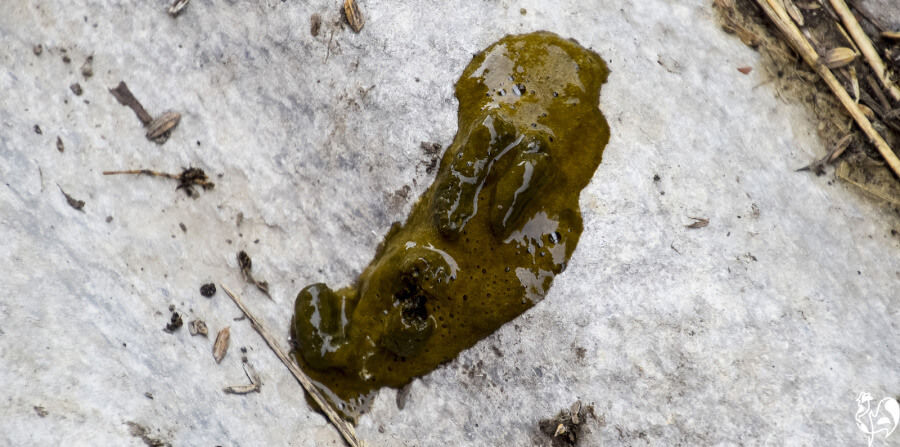
And if you see different coloured poop, it's far more likely to be related to diet than illness. Green poop, for example, is often from chickens who are free ranging and have access to a lot of greenery. Black is often due to eating blueberries, or charcoal.
Clear, watery droppings are generally the result of chickens drinking more water or eating a lot of frozen treats in very hot weather.
What's not normal in the world of chicken poop?
- Look particularly for blood in droppings, particularly if the droppings are very runny. It can be an indicator of Coccidiosis.
- Blood in firm droppings can be caused by a natural shedding of the gut lining, which is nothing to be concerned about.
- Examine the poop for worms. Roundworms are pretty easy to spot - white and round...
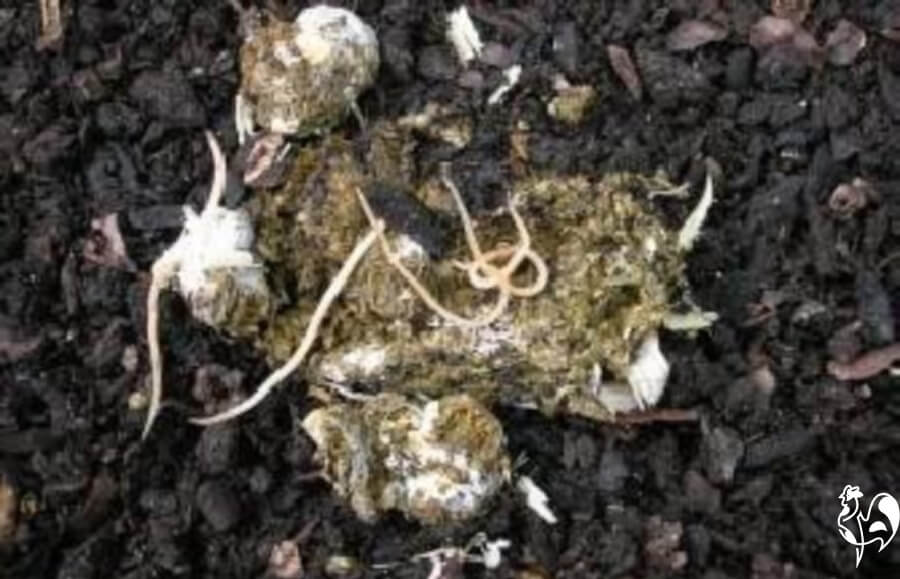
- If you discover worms in poop you will need to worm the whole flock. Don't believe what you read online about herbs, spices or pumpkins or sunflower seeds being natural de-wormers. There's no evidence that they are.
- You will need a chemical de-wormer. Consult your veterinarian, or look online for Ivermectin. Large breeds need no more than 5 drops, placed at the back of the neck; bantams require just one; other breeds three.
11. Eggs as an indicator of chicken health.
One of the best things about keeping chickens is their delicious, nutritious eggs.
When they first start laying, though, the eggs can look a bit strange. It’s nothing to worry about - it’s just their system getting used to a new process.
So if you find eggs which look very small, very large or very wrinkled, don’t assume it’s an indication of health issues.
This egg, for example, is perfectly normal.
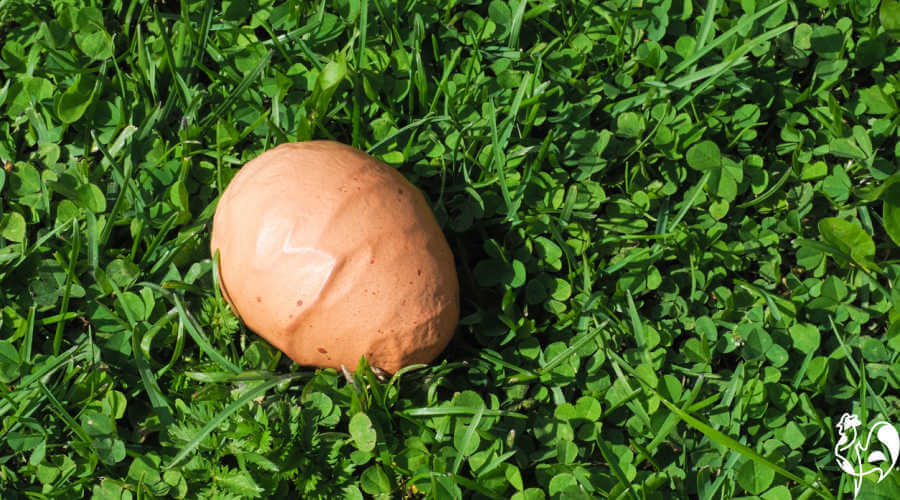
When a hen slows egg-laying.
Hens can stop laying for different reasons - most of them due to natural causes, not illness. It’s important to recognise the difference.
- Reduced eggs production can be a sign of illness, but is more often simply slowing down either due to age, or as winter approaches.
- A chicken’s laying cycle is dictated by light. The more light, the more eggs. I look at the pros and cons of adding extra light in the coop, here.
- A moulting hen will also lay fewer eggs. She requires all her energy and protein reserves to replace her plumage. See more details about moulting, here.
- A hen will normally be at her most productive for the first year after she begins to lay. After that - and depending on the breed - she will slow down until, in her older age, she’ll stop altogether.
What should ring alarm bells about eggs?
- Soft-shelled eggs should be taken very seriously. They can lead to egg peritonitis, whereby an egg breaks in the oviduct (the hen’s internal laying system) and it becomes infected.
- The most effective way to prevent that is to make sure your hens have additional calcium freely available to them. They will take as much as they need.
- If they don’t have it, they will use calcium from their own bones to make eggshells, which leads to other problems. See this article for detailed information about oyster shell.
- Lash eggs: these unpleasant looking “eggs” are a sign of an oviduct infection called Salpingitis. The immune system tries to ward off the infection, and passes a lash egg as a result. For (very unpleasant) photos, see the British Hen Welfare Trust page(5).
- This infection is best treated by a qualified veterinarian.
12. Behaviour and health.
One of the best indicators of chicken health is their behaviour.
A healthy chicken is active, usually standing up and scratching around for bugs, engaging in activities like laying, dust bathing and feeding.
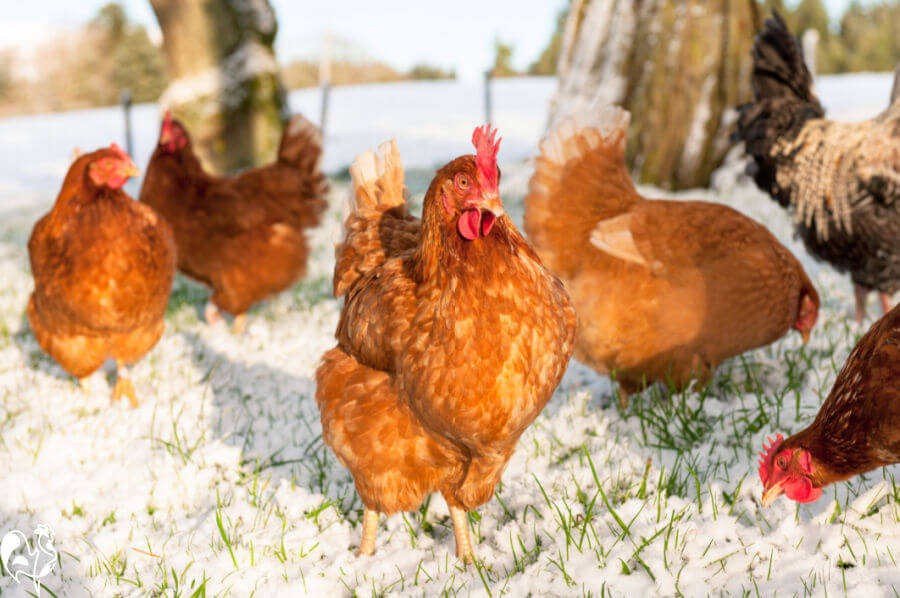
What kind of behaviour is indicative of problems with chicken health?
- Are your chickens reluctant to roost, or choosing to huddle together in a corner? Check for red mite, or rats and mice.
- Check any chicken who looks miserable. How do you know if a chicken is miserable? S/he will be hunched, usually standing alone, not engaging with friends or engaging in any normal activity.
- Often, an unwell chicken will sit hunched on the ground or on a roost, possibly fluffed up, with her head hanging close to her body.
- Keep a close eye on that bird. Is s/he eating and drinking normally? Has she stopped laying? Is she showing any signs of not being able to move properly such as limping or throwing a leg out to one side?
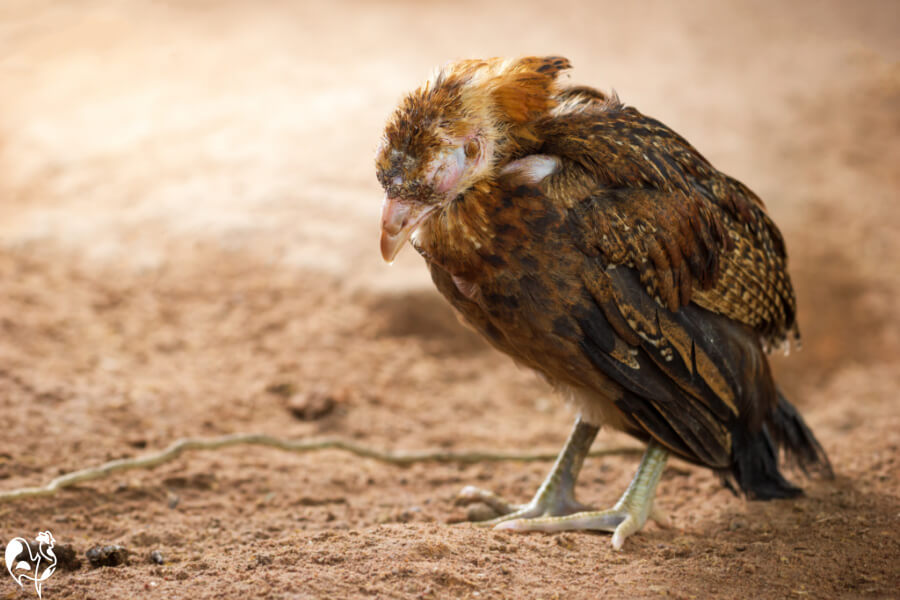 A chicken standing hunched is a reason for more in depth examination.
A chicken standing hunched is a reason for more in depth examination.Bear in mind, though, that there may be a good reason for that!
- If a chicken is sitting along in one place, particularly if it's on a nest box, it may be because she's broody rather than ill. Check underneath her - has she gathered eggs?
- Is it wet weather, or is there extreme cold? Some breeds don't care about the weather - my Red Stars will go out come rain or shine, while Silkies are much more reluctant to face wet days.
- Are there any signs of predators around? Chickens will often decide to stay inside, or huddle together outside, if there are.
- Has there been a recent loss in the flock? There's evidence that chickens grieve. A few additional high protein treats can help - but in moderation.
- Some days, a chicken may just feel a little "meh" - much like we can. The important thing is to watch for changes in behaviour.
The best way of spotting health problems?
Simple - spend time with your flock!
There's no better way of checking what's going on with your flock than simply spending time with them.
What could be more fun than that?
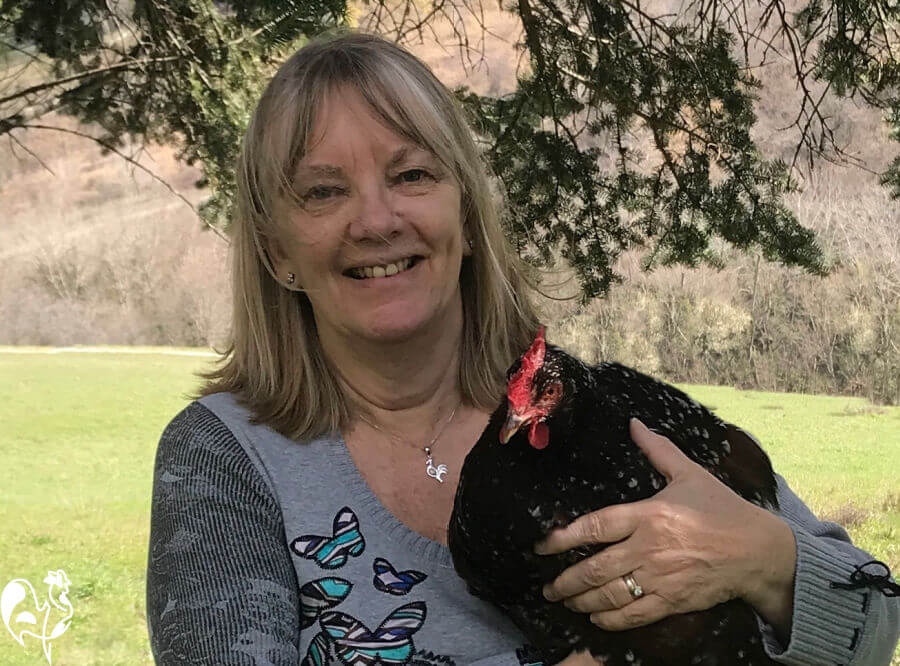 What could be better than spending time with your flock?
What could be better than spending time with your flock?If you found this article useful, you may like these too.
Sources.
Please note: This page is written as general information only. It is not intended as medical or veterinary advice and should not be taken as such.
If you're worried about your or your chickens' health, you should always see your doctor or veterinarian.
A lot of "facts" you'll find on the internet are often people's individual views, based on inaccurate information repeated from poor quality sources.
The information I provide in this article and others is based not just on my own experience, but on evidenced facts from scientific, peer-reviewed research and books from highly respected and experienced poultry keepers such as Gail Damerow.
Some of the trusted sources I have used in this article are these.
1. British Hen Welfare Trust: Hen Examination Guidelines and treating sour crop.
2. Mississippi State University, Department of Agriculture: Diseases of Poultry.
3. Damerow, Gail: The Chicken Health Handbook. Pub. Storey, 1994.
4. Hester, P, et al: Effect of partial comb and wattle trim on pallet behavior and thermoregulation. Pub. Journal of Poultry Science, 2015.
5. British Hen Welfare Trust: Lash Eggs.
